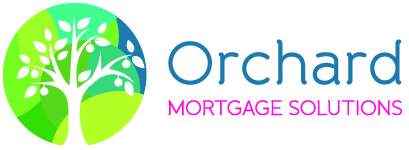Mortgage Types Explained
The good news for prospective homeowners is that there are several types of mortgages available on the market, but choosing the best option is often quite complex.
Each mortgage type differs from the next in its features, so the most suitable for you will depend on your circumstances and lifestyles.

Before you settle for a mortgage product, ask yourself:
- Do you want a repayment or interest-only mortgage?
- Should you choose a fixed rate or a Standard Variable Rate (SVR)?
- Do you require special features?
- How will you know what’s suitable for your case?
When being bombarded by numerous mortgage products, it can be confusing to figure out which one will be best for you, especially if you’re a first-time buyer or are remortgaging. But you need not worry because we’re here to guide you through the entire process by answering these important questions.
Interest-only or repayment?
Before you select a mortgage product, first decide how you’ll make the mortgage repayments. Are you going to use interest-only or repayment mortgage? Decide whether you’ll pay both the interest and capital monthly, or whether you’ll pay the interest on the mortgage first and then repay the loan later on, possibly by selling the property.
Repayment mortgages
With this type of mortgage, the monthly repayments will cover both the interest and capital on the loan. No other form of repayment is necessary.
The pros
A repayment mortgage is straightforward, so it’s easy for first-time owners to understand the product. Since you’ll not be repaying the entire loan amount at once, you’ll avoid the risk of investing in the stock market for the repayment vehicle. You’re guaranteed to clear your loan within the stipulated period if you make full mortgage repayments for the entire term.
The cons
You’ll not benefit from a pension or ISA because these are investments affected by the stock market. In a bid to keep the monthly costs down, you might select another long term mortgage product, which will work against you because the total period of your mortgage will increase thus increasing the total mortgage cost.
Interest-only mortgages
With this type of mortgage, your monthly instalments don’t repay any of the capital but only cover the loan interest. Therefore, the capital will remain outstanding and you’ll be required to clear the full amount at the end of the term. But you can still pay it early according to the lender’s terms and conditions.
The pros
You have a wide variety of investment vehicles to choose from, and some may have tax advantages. Also, if you re-mortgage or move, your investment vehicle will be reallocated to your new mortgage. We recommend speaking to our investment adviser first if you’re considering this route.
The cons
Unlike the repayment mortgage, the total debt amount will not reduce over time. Also, there is no guarantee that the selected investment vehicle will mature adequately to repay the loan. However, you can talk to your lenders to establish whether you can convert your mortgage to repayment to cover investment shortfalls.
Interest rate options
Once you have decided on the type of mortgage product, you’ll then need to decide on an interest rate option. There are several interest rate products on offer and each has its unique advantages and disadvantages. However, the disadvantages are subjective because what you might see as a drawback might be valuable to another person. The mortgage type you select should fit your current and future needs.
Standard Variable Rate (SVR)
This is the original – and simplest – form of interest rate product because it sets your rate according to the lender’s standard variable rate. Each lender has an SVR for charging interest, and they set it themselves, but they’re likely to increase it if the Bank of England increases the base rate. Keep in mind that lenders are free to increase or decrease their SVR by whatever margin they choose regardless of whether the Bank of England has increased the base rate.
- The pros: Usually, there are no early repayment charges.
- The cons: The cost of your mortgage might go up due to the unpredictability of interest rates, which makes it hard for you to plan your finances. In most cases, the SVR rates are often higher than the introductory rates.
Discount rate
This type of mortgage rate offers a discount or reduction of a set amount off the SVR set by the lender. If the SVR fluctuates, your mortgage rate also changes accordingly, but at the same level as the discount. After the end of the reduced rate, the loan usually reverts to the original SVR set by the lender, and your payments will increase at this point since the discount will be removed.
- The pros: You’ll save significantly in comparison with the lender’s SVR since your interest will be charged at a discounted rate.
- The cons: During the discounted period, you’ll be required to make early repayment charges, which can be expensive if you want to re-mortgage to another lender before the period ends.
Fixed rate
A fixed-rate refers to a standard rate set for a specified period, e.g. 2, 5, or 10 years. At the end of this period, the rate will revert to the lender’s SVR. Fixed rates are very popular because the lenders compete for your business and will, therefore, offer a low starting rate.
- The pros: During the fixed-rate period, you’ll know exactly the amount you’re required to pay, even if the base rates are changed by the Bank of England.
- The cons: Fixed mortgage rates usually have early repayment charges. Besides, your fixed-rate will not drop even if the base rate drops, which is more expensive when compared to tracker or discount rate.
Tracker rate
A tracker rate fluctuates according to the base rate set by the Bank of England, but it’s within a set margin that remains constant for the initial product period. It’s not affected by the changes in your lender’s SVR. Most tracker rate products are useful if you want to take advantage of falling interest rates since they offer flexible terms.
- The pros: A tracker rate is usually cheaper than a fixed rate as it allows you to benefit from bank base rate reductions.
- The cons: The tracker rate rises automatically when the base rate rises. It also lacks the security offered by capped or fixed-rate mortgages.
Droplock mortgages
This is a tracker or discount mortgage that allows you to switch to a fixed rate during the repayment period without incurring any early repayment charges.
- The pros: You’ll be able to enjoy low base rates with the option to switch to a fixed rate.
- The cons: It’s as risky as a tracker or discount rate mortgage, and the lender will not suggest when you can switch to a fixed rate.
Offset mortgages
This entails linking your current or savings account to your mortgage account to offset your mortgage balance with your savings. Depending on your lender, you can either make the same monthly payments while the term reduces or vice versa. This type of mortgage is appropriate if you have a high savings balance.
- The pros: The more money you can put in your savings account, the less interest rate you’ll pay for your mortgage. You can also withdraw money from your savings account anytime you need to do so.
- The cons: Offset mortgages are more complex than other types of mortgages and as a result, the rates can be higher.
A final word
There are numerous other types of mortgages, but these are the main base elements that will determine the product you’ll get from lenders. Our advisers at Orchard Mortgage Solutions are ready to guide you through the types and terms to help you figure out the best mortgage product for your new home.
